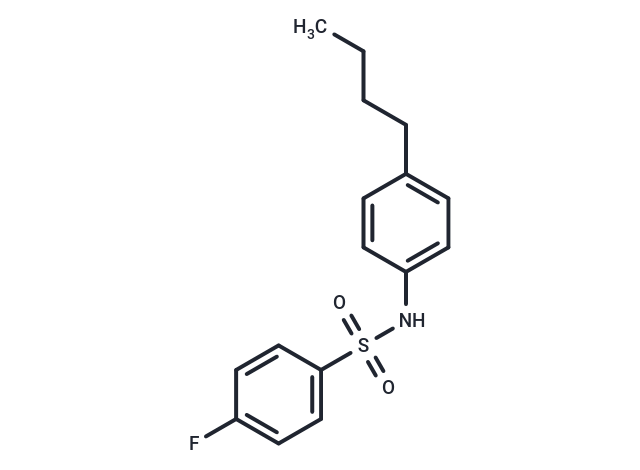Shopping Cart
- Remove All
 Your shopping cart is currently empty
Your shopping cart is currently empty

DC260126 is a small-molecule antagonist of FFA1 (GPR40)

| Pack Size | Price | Availability | Quantity |
|---|---|---|---|
| 5 mg | $50 | In Stock | |
| 10 mg | $66 | In Stock | |
| 25 mg | $144 | In Stock | |
| 50 mg | $227 | In Stock | |
| 1 mL x 10 mM (in DMSO) | $54 | In Stock |
| Description | DC260126 is a small-molecule antagonist of FFA1 (GPR40) |
| In vivo | DC260126, a small molecule antagonist of GPR40, on β-cell function following administration of 10 mg/kg dose of DC260126 to obese diabetic db/db mice. Oral glucose tolerance test, glucose stimulated insulin secretion and insulin tolerance test were used to investigate the pharmacological effects of DC260126 on db/db mice after 21-days treatment. Immunohistochemistry and serum biochemical analysis were also performed. Although no significant change of blood glucose levels was found in DC260126-treated mice, DC260126 significantly inhibited glucose stimulated insulin secretion, reduced blood insulin level and improved insulin sensitivity after 3 weeks administration in db/db mice. Moreover, DC260126 reduced the proinsulin/insulin ratio and the apoptotic rate of pancreatic β-cells remarkably in DC260126-treated db/db mice compared to vehicle-treated mice (p<0.05, n = 8). Suggest that although DC260126 could not provide benefit for improving hyperglycemia, it could protect against pancreatic β-cells dysfunction through reducing overload of β-cells, and it increases insulin sensitivity possibly via alleviation of hyperinsulinemia in db/db mice[1]. |
| Animal Research | To investigate the dose-dependent effect of DC260126, nine-week-old db/db male mice were divided into four groups (n = 6/group). Mice were give vehicle (5% DMSO in PBS) or DC260126 (3, 10, 30 mg/kg) once daily by tail vein injection for 5 days. At day 5, each group of mice were fasted for 6 h and blood samples were collected from orbital venous plexus and centrifuged for serum separation. Then the concentration of serum insulin level was measured by ELISA kit following its protocol. For long term experiments, six-week-old obese db/db male mice were divided into two groups (n = 8/group) and given vehicle (5% DMSO in PBS) or DC260126 (10 mg/kg) once daily by tail vein injection for 24 days, respectively. Meanwhile, their lean littermates were treated with vehicle in an identical manner as normal control. Body weight and food intake were recorded regularly. After 6 h fasting, blood glucose concentrations were monitored by tail vein blood using a glucometer every week. At the end of the experiment, mice were fasted for 12 h to perform oral glucose tolerance test (OGTT, day 21) and for 6 h to generate insulin tolerance test (ITT, day 23) as described with slight modification indicated . Meanwhile, the insulin release during OGTT was also measured, blood sample was obtained from tail veins and serum insulin concentration was determined by ELISA kit (Alpco, USA). At the end of experiment (day 24), mice were fasted for 6 h, and blood samples were collected from orbital venous plexus and centrifuged for serum separation. Then the animals were killed by CO2 inhalation, the pancreas tissue were removed and kept in 4% paraformaldehyde[1]. |
| Molecular Weight | 307.38 |
| Formula | C16H18FNO2S |
| Cas No. | 346692-04-4 |
| Smiles | CCCCc1ccc(NS(=O)(=O)c2ccc(F)cc2)cc1 |
| Relative Density. | no data available |
| Storage | Powder: -20°C for 3 years | In solvent: -80°C for 1 year | Shipping with blue ice. | |||||||||||||||||||||||||||||||||||
| Solubility Information | DMSO: 100 mg/mL (325.33 mM), Sonication is recommended. | |||||||||||||||||||||||||||||||||||
Solution Preparation Table | ||||||||||||||||||||||||||||||||||||
DMSO
| ||||||||||||||||||||||||||||||||||||

Copyright © 2015-2025 TargetMol Chemicals Inc. All Rights Reserved.